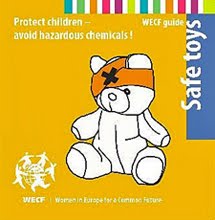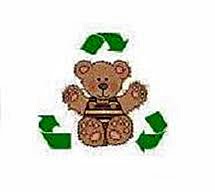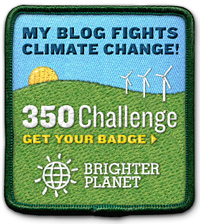
Throwing away items that could be recycled diminishes energy, water and natural resources that could be saved by recycling. Recycled doesn’t have to mean old or used, in fact some of the most fun, cool and funky items are made from recycled materials.
Here is the proof! This fantastic
“Green” Tree, made of super durable recycled cardboard and non-toxic, child-safe inks, is a highly imaginative 3-D puzzle and construction set. Brightly-coloured, amazingly-cool graphics are featured on 120 durable, recycled cardboard pieces. To explain the Green Tree is a little tricky but it's essentially like building your own tree out of cardboard birds, birdhouses, leaves, mushrooms, apples and other pieces of printed plant and wood textures. It stands c:a 70 cm high and seems like such a fun, creative way to spend an afternoon. Afterward, it becomes a work of art to display...
It can also become a 3-D family tree! Work with your child to compile names of family members. Then write the names with a marker on the leaves or on labels and affix them on the leaves. Use photographs or a combination of both. Be creative! Arrange the branches and leaves for groups of extended families. Put great-grandparents and grandparents near the top. You can even add pets. Why not!
Construction or building toys like this Tree contribute to a child's early learning in a number of ways such as developing creativity skills, strengthening fine motor skills, and refining spatial awareness. Fine motor skills play an important role in preparing kids to be self-sufficient (to write legibly with a pencil, to dress, or to brush his or her teeth). Construction toys engage the imagination and strengthen problem solving and analytical skills. As a cooperative activity, construction toys are good for bringing children or child and parent together to problem solve, learn together, and communicate effectively.
Most probably you already know but let me remind you that the world’s population is expanding amazingly fast for our “mother” planet to cope with our needs. In the year 2000 it reached over 6 billion people and is estimated that by 2050 the population will rise to over 9 billion! With the worlds natural resources already stretched it is easy to see how these resources will be depleted. If we intend to leave our children and grandchildren with the same standard of living we have enjoyed, we must start to think about our efforts to preserve it.
Children might wonder why we need to bother buying recycled goods – surely the shops will still be full of shiny, brand new things, no matter how much recycled stuff is about? We should encourage them to find out about the production processes of many everyday items and what happens to them when they are no longer required – finding out specifically how things are disposed of and the effect the waste has on the environment, wildlife and climate will probably be all the encouragement they need to look for recycled alternatives!
Some tips for getting your children interested in recycling:
1) Give your kids a shopping challenge next time you go to the supermarket – armed with your usual list, see how much household stuff they can find that's recycled – bin bags, toilet paper and stationery should all be easy to spot – but are there any surprises on the shelves? I know it takes more of your time for shopping but not that is useful, it can be fun as well!
2) Craft projects are a great way to involve your children in recycling at home and making their own recycled goods. A good way to start them off could be by resisting the temptation to go out and buy new craft items for school projects – why not make a vow to make all homework projects from recycled materials? You could even get the school involved and make it a policy all the children adopt.
Recycled products aren't just fun or the latest fashion- making them the norm to our children will go a long way in reducing rubbish, protecting the environment and the planet for the future generations.
Read more...
 There is never enough written about health problems and damages our children can have by using and playing with toys containing Phthalates (BPA). The first contact they may have with BPA is actually through pacifiers. I was glad to learn that nowadays there are natural alternatives to "old" pacifiers (those potentially containing BPA).
There is never enough written about health problems and damages our children can have by using and playing with toys containing Phthalates (BPA). The first contact they may have with BPA is actually through pacifiers. I was glad to learn that nowadays there are natural alternatives to "old" pacifiers (those potentially containing BPA).


















